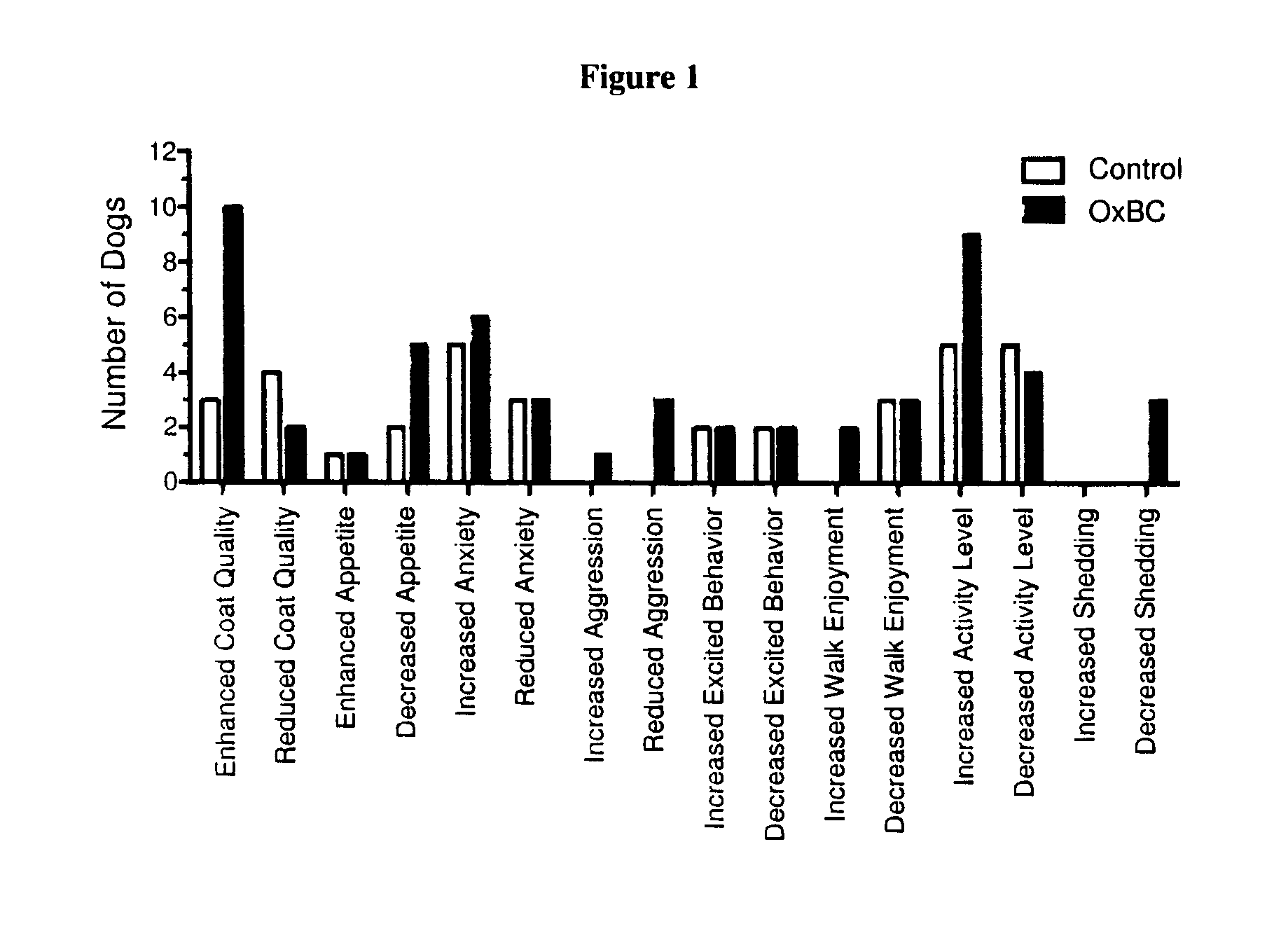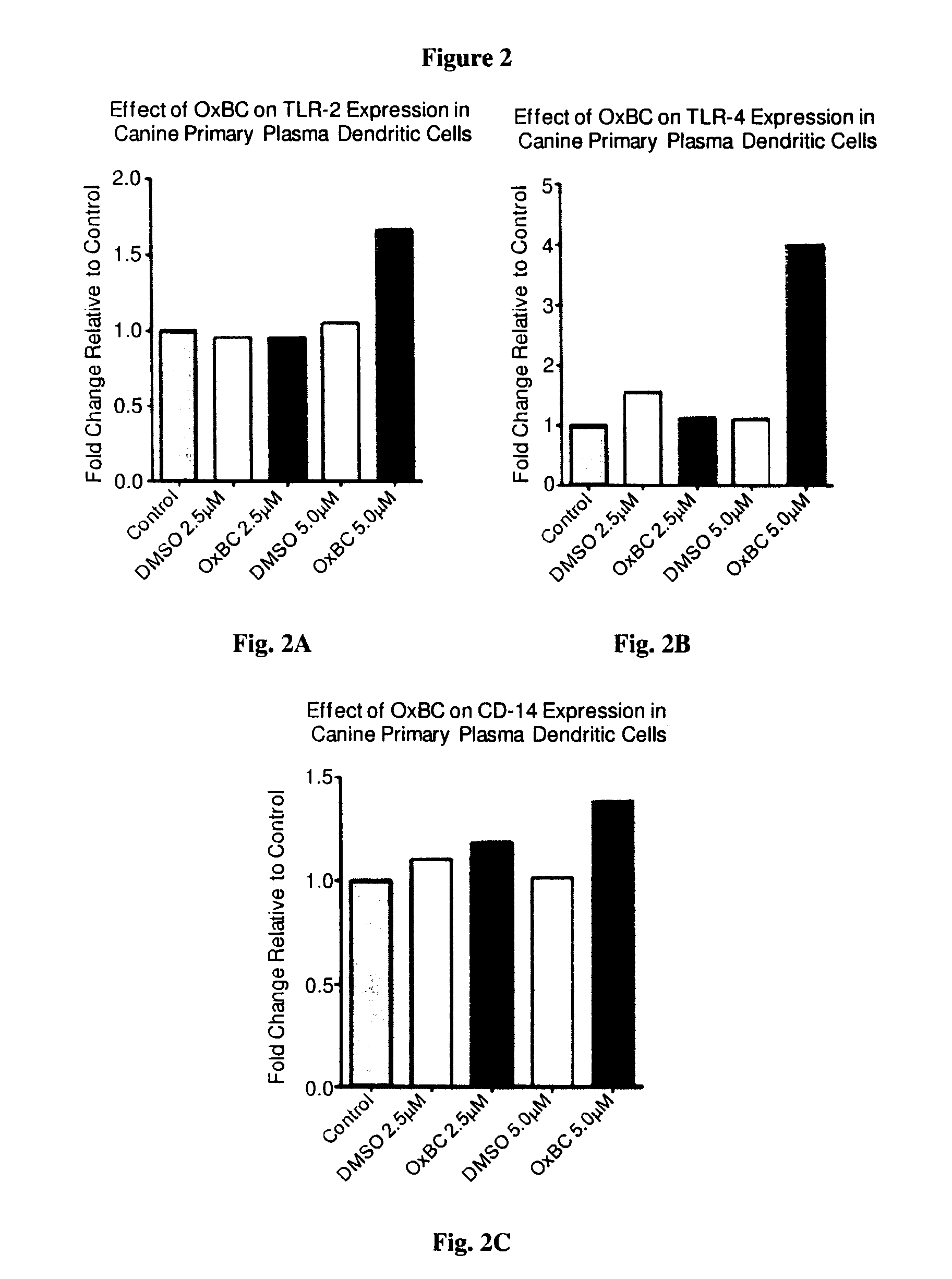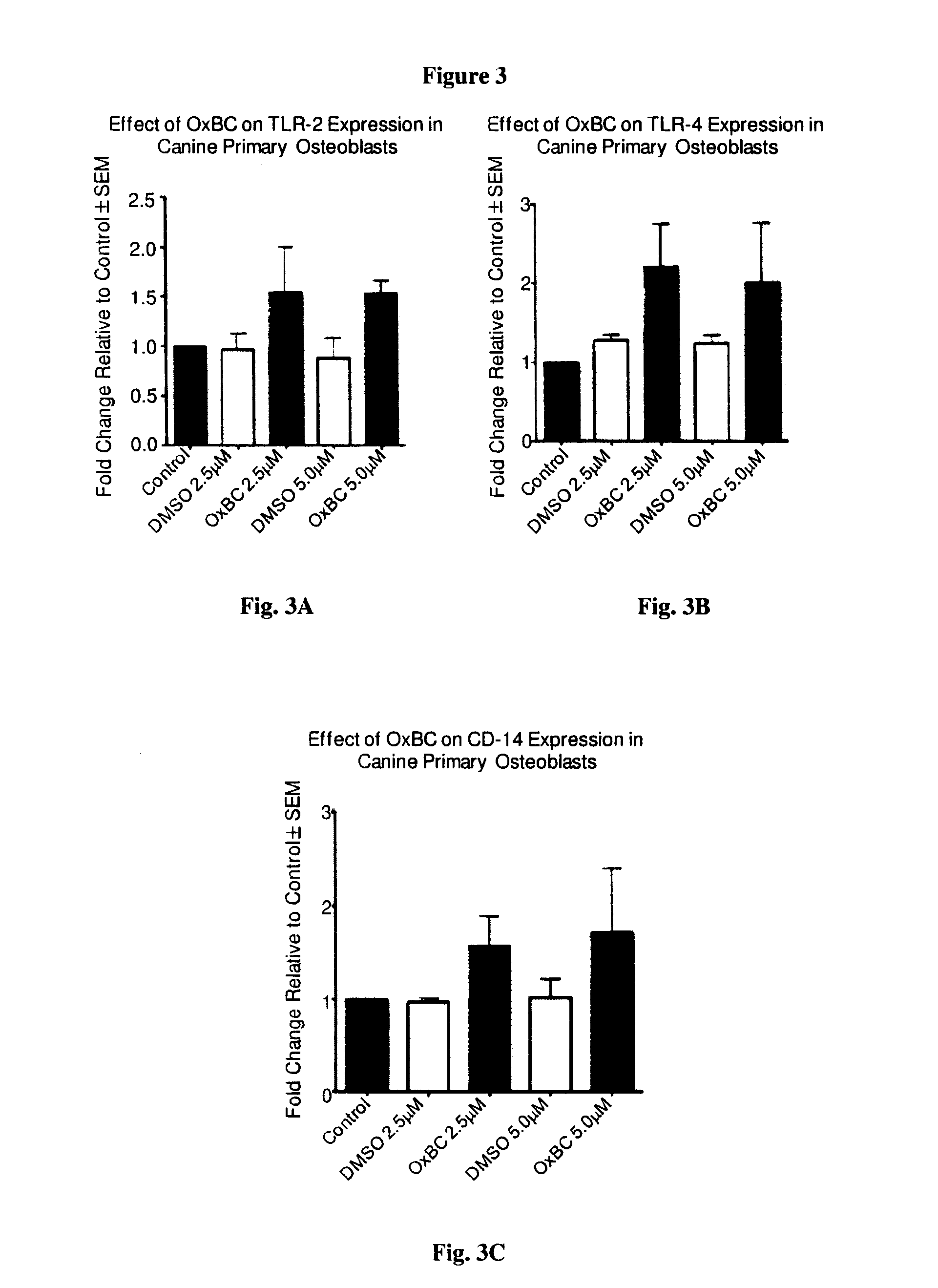Methods and compositions for improving the health of animals
a technology of compositions and methods, applied in the field of carotenoid oxidation products, can solve the problems of poor coat condition, poor health of elderly pets, joint stiffness, energy loss, etc., and achieve the effect of improving the health of an animal
- Summary
- Abstract
- Description
- Claims
- Application Information
AI Technical Summary
Benefits of technology
Problems solved by technology
Method used
Image
Examples
example 1
Oxidatively Transformed Carotenoid (OxBC) in Older Dogs
[0066]Seven privately-owned older dogs, age 8-15, received OxBC (0.5 mg / kg / day) as an oral supplement blended with cream cheese vehicle.
[0067]At the start of the study most dog-owners characterized their animals as lethargic with diminished desire for outdoor activity. Upon supplementation with OxBC for four months these owners reported that their dogs showed improved demeanor and were more eager to go outside and play. Improved coat quality as indicated by reduced shedding and a shinier appearance was an additional OxBC-benefit reported by some owners.
[0068]Following five months of receiving OxBC the dogs were taken off the supplement for seven weeks. During this seven-week period owners reported that their dog's desire for activity appeared to be returning towards pre-study levels. Upon restarting the OxBC supplement these same owners reported that their dogs once again responded positively showing increased active levels and ...
example 2
Clinical Study of Oxidatively Transformed Carotenoid (OxBC) In Dogs
[0069]A clinical trial was conducted to evaluate the efficacy of carotenoid oxidation products in dogs using OxBC as a supplement. There were significant improvements in coat quality and shedding, as well as a trend towards improvement of walk enjoyment, in treated dogs compared to controls.
[0070]The clinical study consisted of a blinded, randomized study with two treatment groups. Forty-six dogs were recruited from the public. Dogs were randomly assigned to either treatment (0.5 mg OxBC / kg body weight in cream cheese) or placebo (cream cheese only) as they were enrolled, regardless of breed, age, sex and neuter status, and whether or not the animal had any medical conditions, was on any medications or was receiving any additional nutritional supplementation. The owner administered the treatment or placebo once daily for a period of six months. This study was conducted with the oversight and approval from the Univers...
example 3
In Vitro Studies
[0086]Established cultures of canine osteoblasts, chondrocytes, and fibroblasts as well as isolated primary dendrictic cells and monocytes were used as model systems to evaluate OxBC-effects on canine immunity. Flow cytometry was used to assess the ability of OxBC to up-regulate expression of innate immune receptors and to enhance the activity of innate immune effector cells. A quantitative real-time PCR (QRT-PCR) approach was used to evaluate changes in the expression of regulators of inflammatory / immune response, which have been previously identified as potential contributors to or therapeutic targets in the pathology of arthritis.
[0087]Flow Cytometry: Canine osteoblasts, chondrocytes, or dendritic cells were seeded (0.5×105-1.0×105) onto 6 well plates 24 hours prior to treatment with OxBC. Cells were next treated with the indicated concentrations of OxBC or equivalent DMSO (vehicle control) in complete media for 24 hours and were then processed...
PUM
| Property | Measurement | Unit |
|---|---|---|
| Mass | aaaaa | aaaaa |
| Mass | aaaaa | aaaaa |
| Mass | aaaaa | aaaaa |
Abstract
Description
Claims
Application Information
 Login to View More
Login to View More - R&D
- Intellectual Property
- Life Sciences
- Materials
- Tech Scout
- Unparalleled Data Quality
- Higher Quality Content
- 60% Fewer Hallucinations
Browse by: Latest US Patents, China's latest patents, Technical Efficacy Thesaurus, Application Domain, Technology Topic, Popular Technical Reports.
© 2025 PatSnap. All rights reserved.Legal|Privacy policy|Modern Slavery Act Transparency Statement|Sitemap|About US| Contact US: help@patsnap.com



